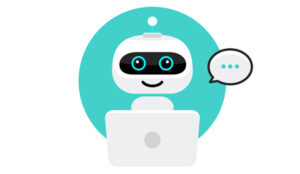KMS Lighthouse share insights into ways to build a chatbot for a knowledge base.
An investment in knowledge always pays the best interest. Benjamin Franklin, one of America’s first promoters of shared knowledge, was known for creating solutions to common problems through innovative technologies.
In the 1700s that meant, among other things, starting the country’s first lending library, a powerful way for people to contribute and benefit from shared knowledge.
What would Mr. Franklin make of today’s knowledge-based chatbots? Most likely he’d say the key to building useful chatbots lies in maintaining a rich knowledge base.
What Is an Enterprise Chatbot Knowledge Base?
Chatbots are designed to recognize a user’s general intent. But how do chatbots know which information to provide when people submit their questions? A knowledge base provides your chatbot with the info it needs to accurately respond to user queries.
Chatbots don’t just pull information out of a hat. They need to be “taught” what to say and when to say it.
Chatbots and Knowledge Bases: The Perfect Match
When integrated with the right knowledge base, chatbots let end-users easily and quickly access the information they need by speaking or “chatting” the way live support professionals do. Once your knowledge base is built, people can access it whenever and wherever they are using any device. As new knowledge becomes available, you simply add, remove, or revise it.
Creating a Knowledge Base for a Chatbot
Customers and other users want a chatbot experience that feels like they’re interacting with a live agent. Chatbots are increasingly sophisticated in mimicking how people converse, but they need human input to get there.
A simplified example of this is if your chatbot has been “taught” to recognize only the word “Hello.” It won’t know how to respond to a user’s greeting of “Hi.”
Data is the key to developing a truly conversational chatbot. Your chatbot should be able to instantly search your knowledge base and use the data it finds to present a personalized response. It takes an enormous amount of data to build a chatbot knowledge base, but the return in the form of efficiency and scaling is well worth the investment.
There are four steps to building a chatbot knowledge base:
- Determining data needs
- Constructing a system to collect data
- Collecting, processing, and storing relevant data
- Sharing the collected information in a way that end-users find helpful
Annette Franz, Founder and CEO of CX Journey Inc., believes although “…there’s more to creating a customer-friendly chatbot, your knowledge base will play a major role in training your chatbot and, in turn, provide a great user experience.” The goal is to create an intelligent platform that solves real-world problems.
Here’s how to get started:
- Define which problems you want a chatbot to solve. For example, do you want to answer customer support questions, conduct research, or schedule meetings?
- Choose a few specific narrow-focus use cases to test.
- Identify the end-users. These may be customers, clients, employees, or all three. Consider the general demographics of each group and make the chatbot user-friendly.
- With the introduction of voice assistants like Siri and Alexa, chatbots are no longer limited to text-based interactions. Decide which interface will best serve your users.
- Do you want to build on existing infrastructure, use an enterprise platform, or develop a stand-alone app?
- Consider outsourcing knowledge-based chatbot development to a third party.
Every organization is different. Building your knowledge base for a chatbot will require attention to industry-specific regulations, privacy concerns, and other legal requirements.
Knowledge Management to Power Chatbots
Gartner anticipates throughout 2020, ninety-nine percent of enterprise AI initiatives will fail due to a deficiency in established knowledge-management (KM) foundations. To be effective, a chatbot must be fed the right information. That means having a knowledge management strategy that is foundational to chatbot capabilities.
At the end of the day, your organization can have multitudes of collected data, but without good KM, your chatbots might not be able to find it.
Author: Guest Author
Published On: 3rd May 2021 - Last modified: 15th Nov 2023
Read more about - Guest Blogs, Annette Franz, KMS Lighthouse





































